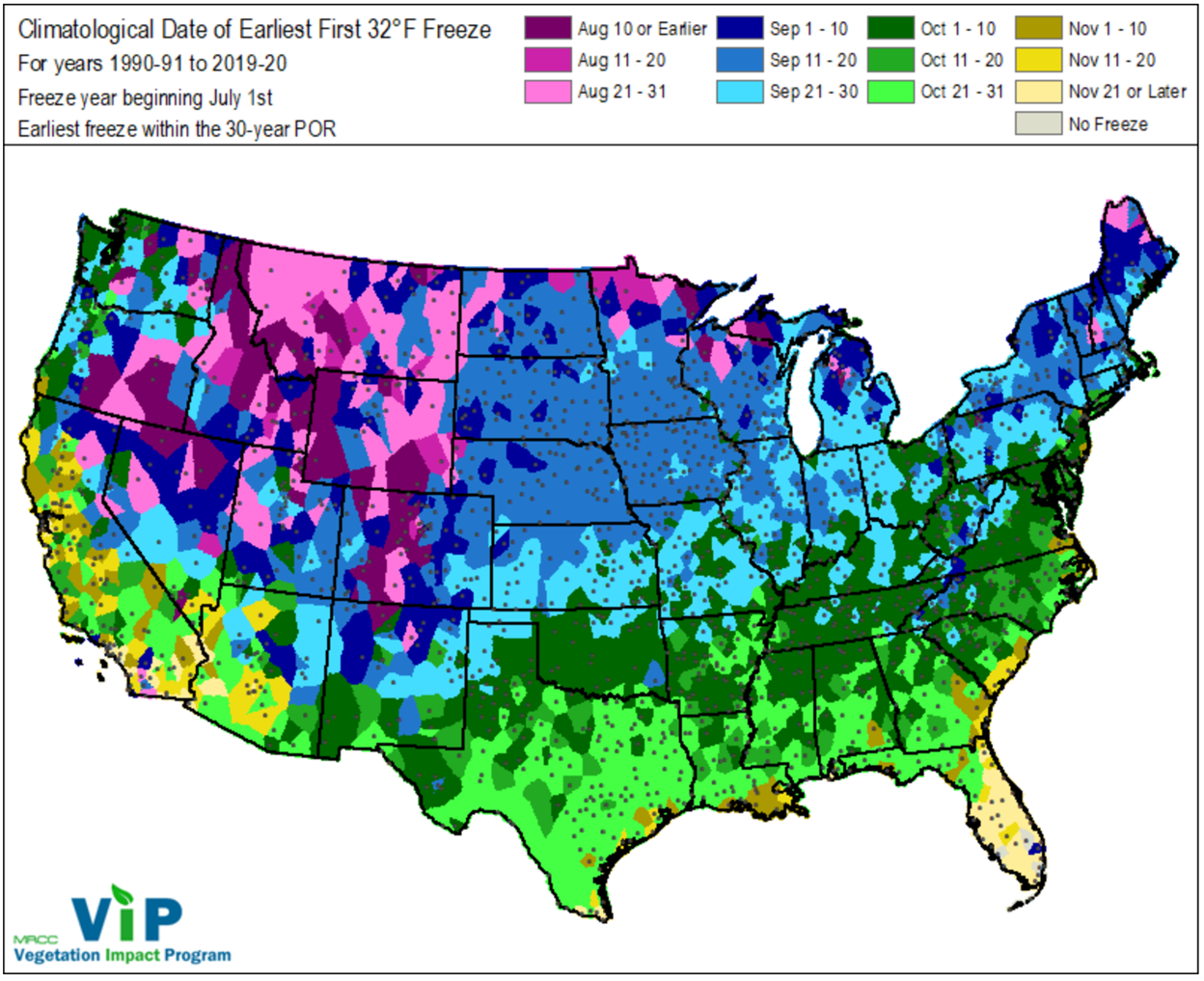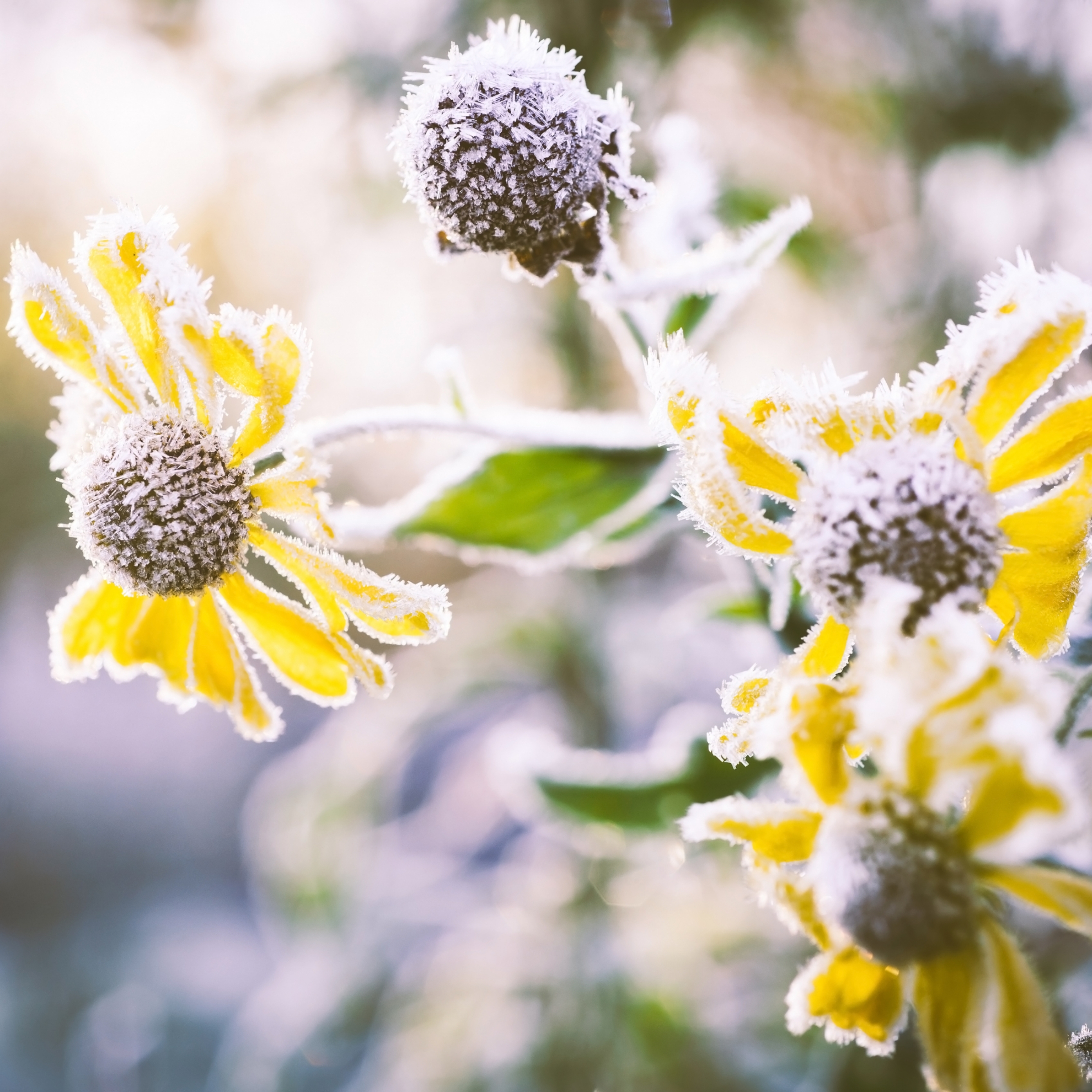What is Frost?
Frost is frozen water that has condensed from water vapor. For frost to occur, surface temperatures must be below freezing. Otherwise, you get dew. Frost forms on plants when they are colder than the dew-point temperature of the surrounding air. The higher the dew-point temperature, the more water is in the air, the more frost will accumulate.
Frost can vary in severity. The classifications we hear about are related to the freeze temperature and its impact on your plants:
- Light freeze. A light freeze is 29°F to 32°F. A light freeze will kill tender plants. Think tomatoes. A light freeze will have little impact on your other plants. Think cabbage.
- Moderate freeze. A moderate freeze is 25°F to 28°F. A moderate freeze is destructive to most vegetation. You’ll notice the heaviest damage on fruit blossoms and tender and semi-hardy plants.
- Severe freeze. The worst. A severe freeze is anything 24°F or colder. It damages most plants and will kill those that aren’t dormant.
What happens to my plants?
Drastic temperature changes, low temps, and long exposure spells disaster for your plants. The worst damage usually occurs in late spring, early fall, or any time there are wild temperature swings. Think an early snowstorm, or a snowstorm after a mild winter. If a freeze occurs with no prior cold weather to "harden off" a plant, damage can be extensive.
Damage often includes:
- The death of dormant flower buds,
- The dieback of overwintering broad-leaved plants,
- Frost damage to tender shoots, flowers, and fruits.
The impact of temperature can vary by plant, its stage of growth, age, health, and water content. Young, actively growing, flowering, and dehydrated plants tend to be most vulnerable. Actively growing foliage is very susceptible to frost damage.
Prevention
What is your Plant Hardiness Zone? The first step is to understand your Plant Hardiness Zone. Knowing your zone can keep you prepared for surprises!

Image Source: Midwestern Regional Climate Center
Water plants
The second step is to keep your plants well-watered throughout the growing season.
Frost damage occurs when ice forms on the leaf surface, drawing moisture from the leaf tissue. The damage from this dehydration will be less severe if the plant is not already drought stressed.
Cover plants when frost is forecasted
Cover plants with professional grade polypropylene fabric (our Frost Protek® brand is amazing), frost cloth, or paper to insulate. Avoid plastic, though. Be careful with sheets or blankets because they provide minimal protection and can crush your plants.
Check out our Garden Bed Cover. It’s my favorite of our products because of its versatility: Garden Bed Cover - 10 feet by 15 feet
Don’t forget your container gardens and hanging baskets! They are more susceptible to frost because their roots are above ground. They don't benefit from the warmth the ground holds.
Our container covers and hanging basket covers come with a drawstring to keep the cold out:
Completely drape your plants. For hanging baskets, pull the covering from the bottom all the way up to the top. Avoid any openings. This traps the heat in the soil, keeping it more humid around the plant foliage. Many of our Frost Protek® covers are designed with a double pull drawstring and cord locks to secure tightly around the plant, providing excellent insulation.
In the event of extended frost, our Frost Protek® covers can be left on your plants. The covers allow air and light to penetrate. However, if you use blankets, remove them every morning to avoid suffocating plants.
Did you know frost cloth varies in weight? Avoid the cheap stuff. Cheap = light fabric. Some brands can be effective at temperatures down to 20° F, but it depends on the fabric and the weave. Frost Protek plant covers are made with 0.9 oz (30 grams per square meter) fabric, which provides protection to about 26°F.
Move containers to a protected location
Western and southern exposures tend to be warmest. Brick walls, rocks, and patios retain and reflect warmth from the sun. We have an old farmhouse (circa 1890… she’s super old). We have a covered porch on the south side of the house. It’s a great place to stash containers that can be moved.
A Note on Mulch
Using mulch is good and bad. It insulates against fluctuating surface soil temperature and guards against too much daytime warm-up that will activate plant growth and increase freeze risk. However, it prevents the capture of heat to protect a frost sensitive plant.
However, compacted, bare soil loses heat quicker than loose soil that is covered with mulch or vegetation.
What Not to Do
Don’t use plastic to cover plants. Plastic is a poor insulator and can harm foliage.
Don’t prune or throw away frost-damaged plants until they begin growing in the spring. Pruning might stimulate new growth which would be vulnerable to late frosts. The frost-damaged leaves and stems will continue to help trap warm air within the canopy.
Don’t panic! Often, the damage is not as bad as it looks. Often, new growth comes from tissue that looks dead. Don’t prune dead wood until new growth starts in the spring.
